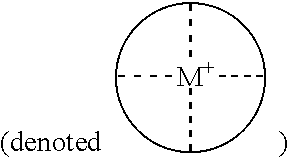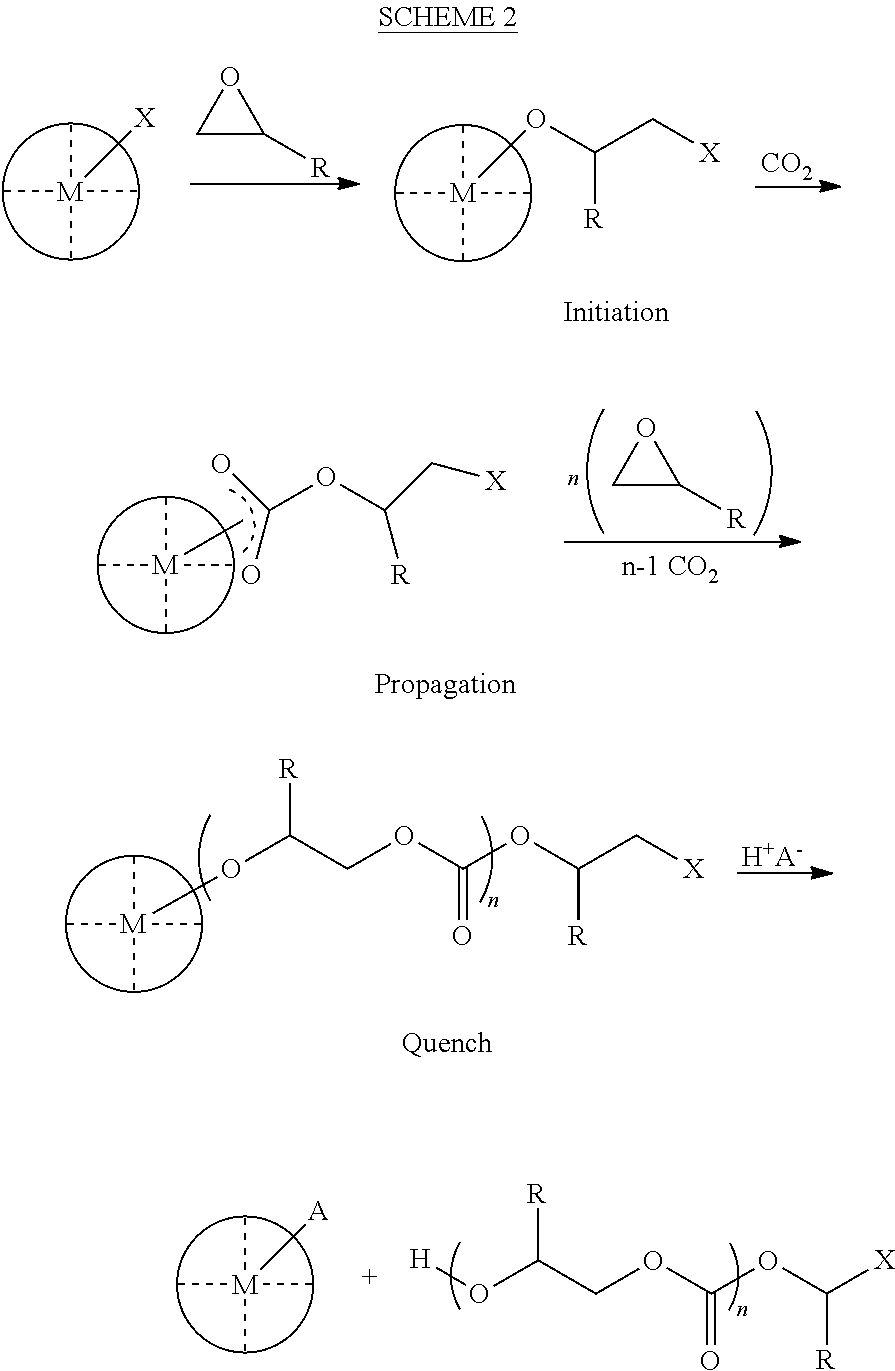Polycarbonate polyol compositions and methods
a polyol and composition technology, applied in the field of polycarbonate polyol compositions and methods, can solve the problems of inconvenient polymer production, inconvenient polymer production, and inability to meet the requirements of many polyol applications, and achieve the effect of efficient production of polycarbona
- Summary
- Abstract
- Description
- Claims
- Application Information
AI Technical Summary
Benefits of technology
Problems solved by technology
Method used
Image
Examples
example 1
[0426]This example demonstrates the use of the polymerization system of the present invention with a chain transfer agent Y-A-(Y), and a catalyst Lp-M-(LI)m utilizing a co-catalyst PPN+ Cl—, where[0427]n is 1,[0428]each —Y is —OH,[0429]-A- is
[0430][0431]-Lp is a salcy ligand
[0432][0433]-M- is Co(III),[0434]-LI is a chain transfer agent -Q′-A′(Z)n, where Q′ is COO−, -A- is —CH2—, and Z′ is —OH, and[0435]n is 1.
[0436]
[0437]24 mg of catalyst E1 (0.04 mmol), 0.45 g (3.1 mmol) 1,4-cyclohexanedimethanol and 20 mg (0.04 mmol) PPN+Cl− were held under vacuum in a Fisher-Potter bottle. The bottle was filled with nitrogen and 20 ml propylene oxide was added. The bottle was pressurized with 100 psi CO2. After 41 h at 30° C. the bottle was opened and the polymer was isolated by pouring into methanol. GPC analysis showed formation of a polymer of Mn=4460, Mw=4610, PDI=1.035. The polymer has a carbonate content of >97%.
[0438]The polycarbonate polyol composition thus obtained consists predominantly...
example 2
[0440]This example demonstrates the use of the polymerization system of the present invention with a chain transfer agent Y-A-(Y)n and a catalyst Lp-M-(LI)m utilizing a co-catalyst PPN+ Cl—, where[0441]n is 3,[0442]each —Y is —OH,
[0443][0444]-Lp is a salcy ligand
[0445][0446]-M- is Co(III), and[0447]-LI is trifluoroacetate.
[0448]
[0449]51 mg of catalyst E2 (0.07 mmol), 0.5 g (1.4 mmol) of propoxylated pentaerythritol and 41 mg (0.08 mmol) PPN+Cl−were held under vacuum in a Fisher-Potter bottle. The bottle was filled with nitrogen and 20 ml propylene oxide was added. The bottle was pressurized with 100 psi CO2. After 22 h at 30° C. the bottle was opened and the polymer was isolated by pouring into methanol. GPC analysis showed formation of a polymer formation of a polymer of Mn=13660, Mw=15420, PDI=1.129. The polymer has a carbonate content of >97%.
[0450]The polycarbonate polyol composition thus obtained consists predominantly of three types of polymer chains: chains P1a arising from i...
example 3
[0452]Example 3 was conducted using conditions similar to Example 2, except Poly(caprolactone) diol having an Mn of 530 g / mol was used as the chain transfer agent.
PUM
| Property | Measurement | Unit |
|---|---|---|
| PDI | aaaaa | aaaaa |
| PDI | aaaaa | aaaaa |
| molecular weight distribution | aaaaa | aaaaa |
Abstract
Description
Claims
Application Information
 Login to View More
Login to View More - R&D
- Intellectual Property
- Life Sciences
- Materials
- Tech Scout
- Unparalleled Data Quality
- Higher Quality Content
- 60% Fewer Hallucinations
Browse by: Latest US Patents, China's latest patents, Technical Efficacy Thesaurus, Application Domain, Technology Topic, Popular Technical Reports.
© 2025 PatSnap. All rights reserved.Legal|Privacy policy|Modern Slavery Act Transparency Statement|Sitemap|About US| Contact US: help@patsnap.com



